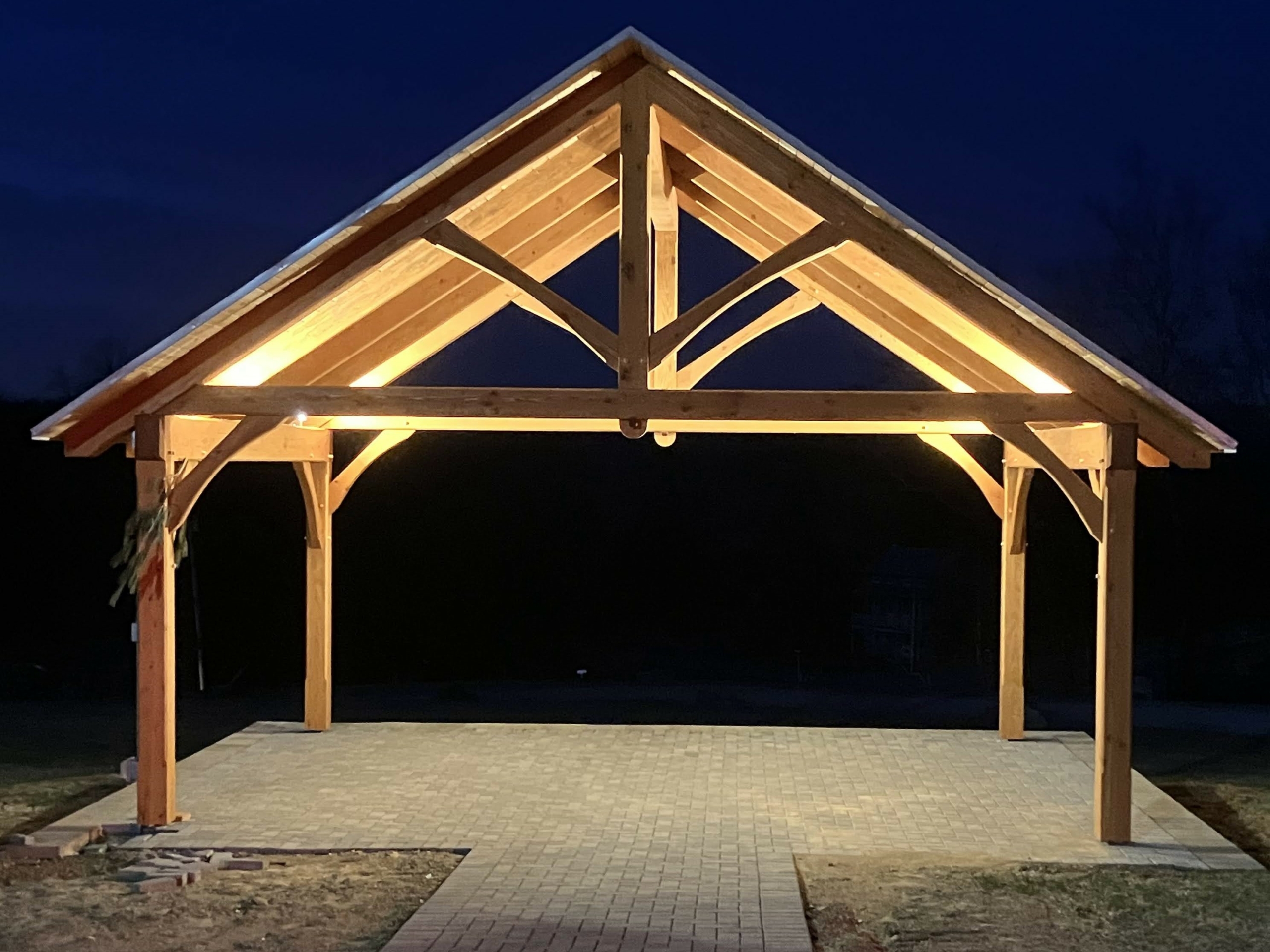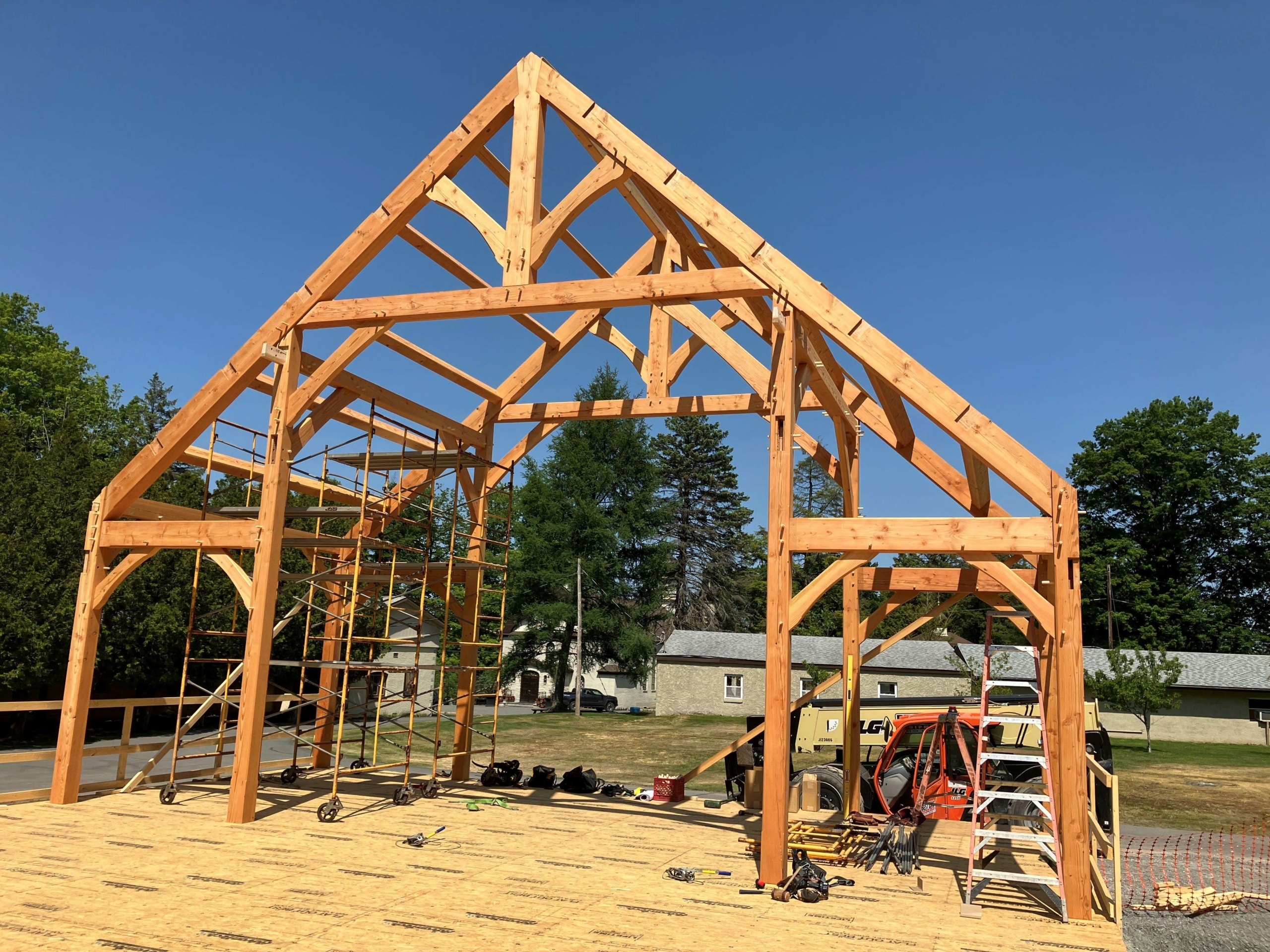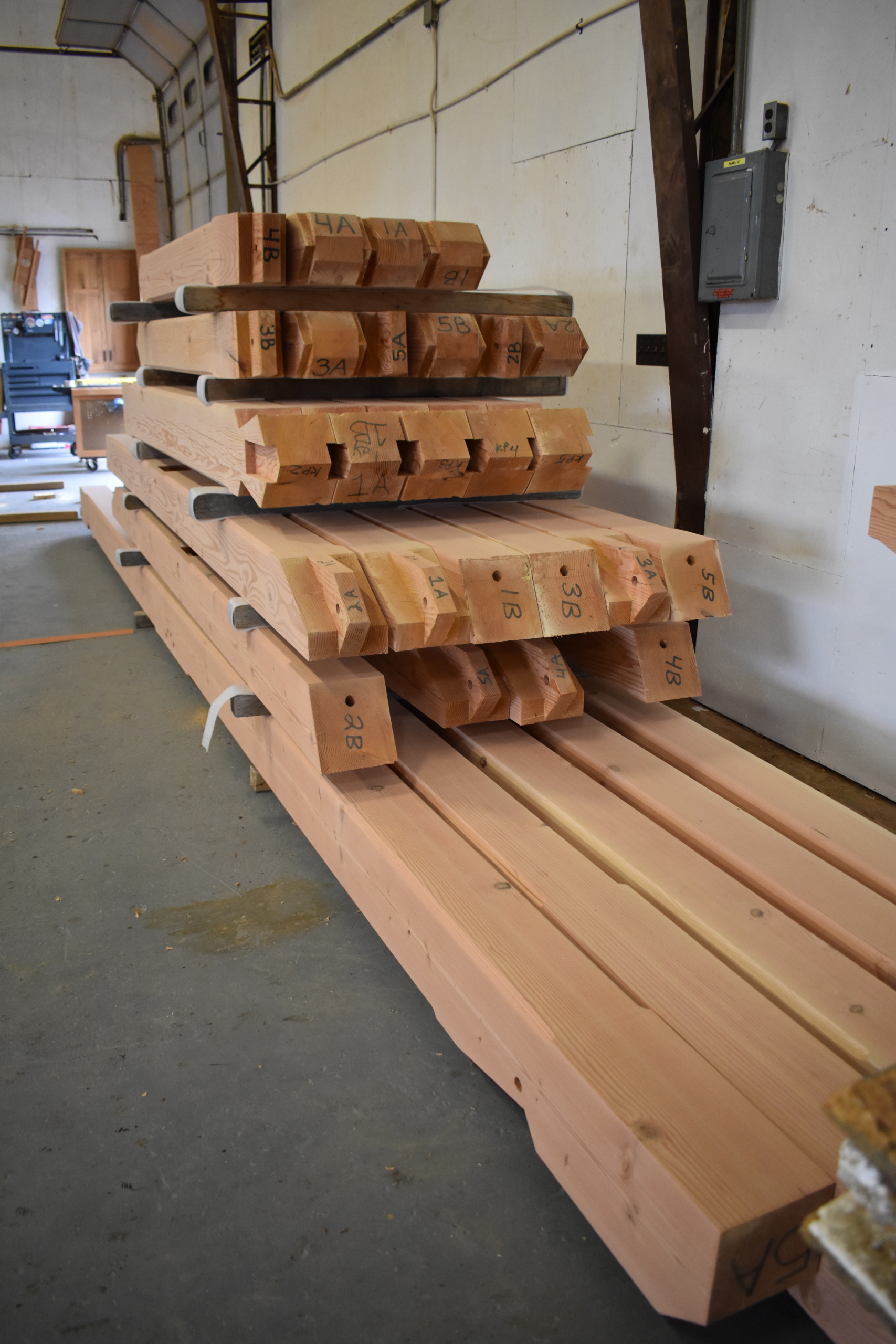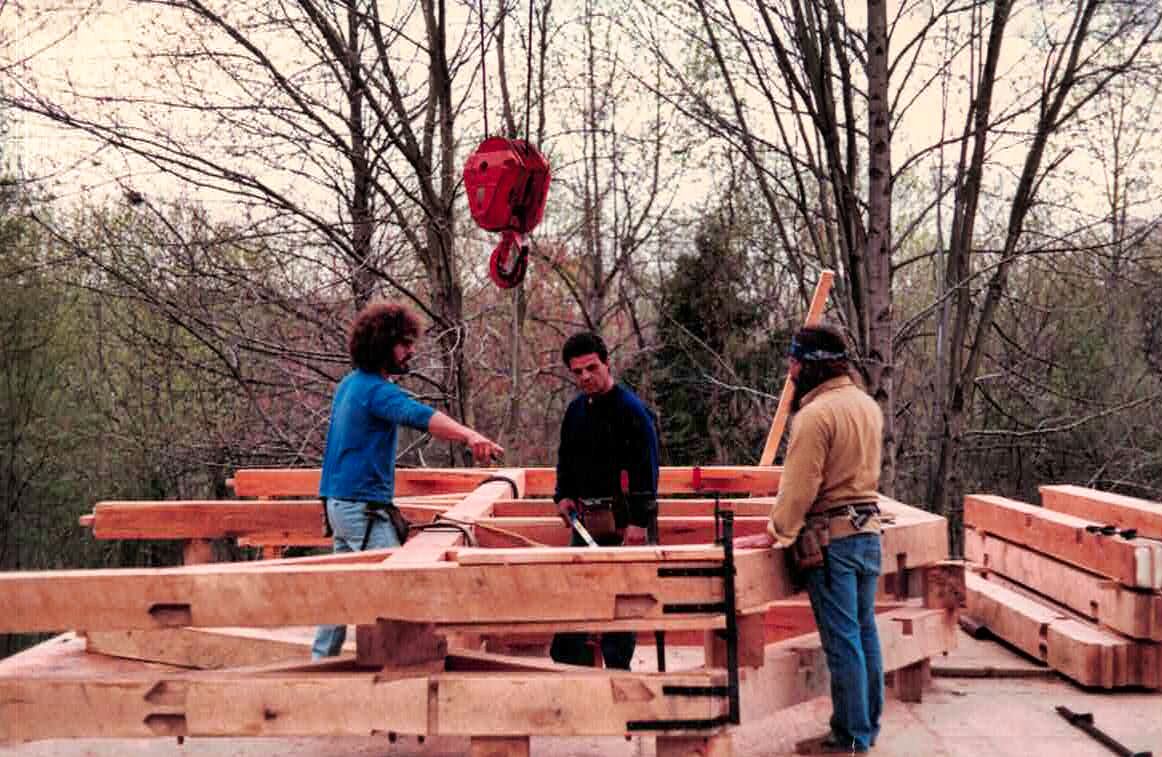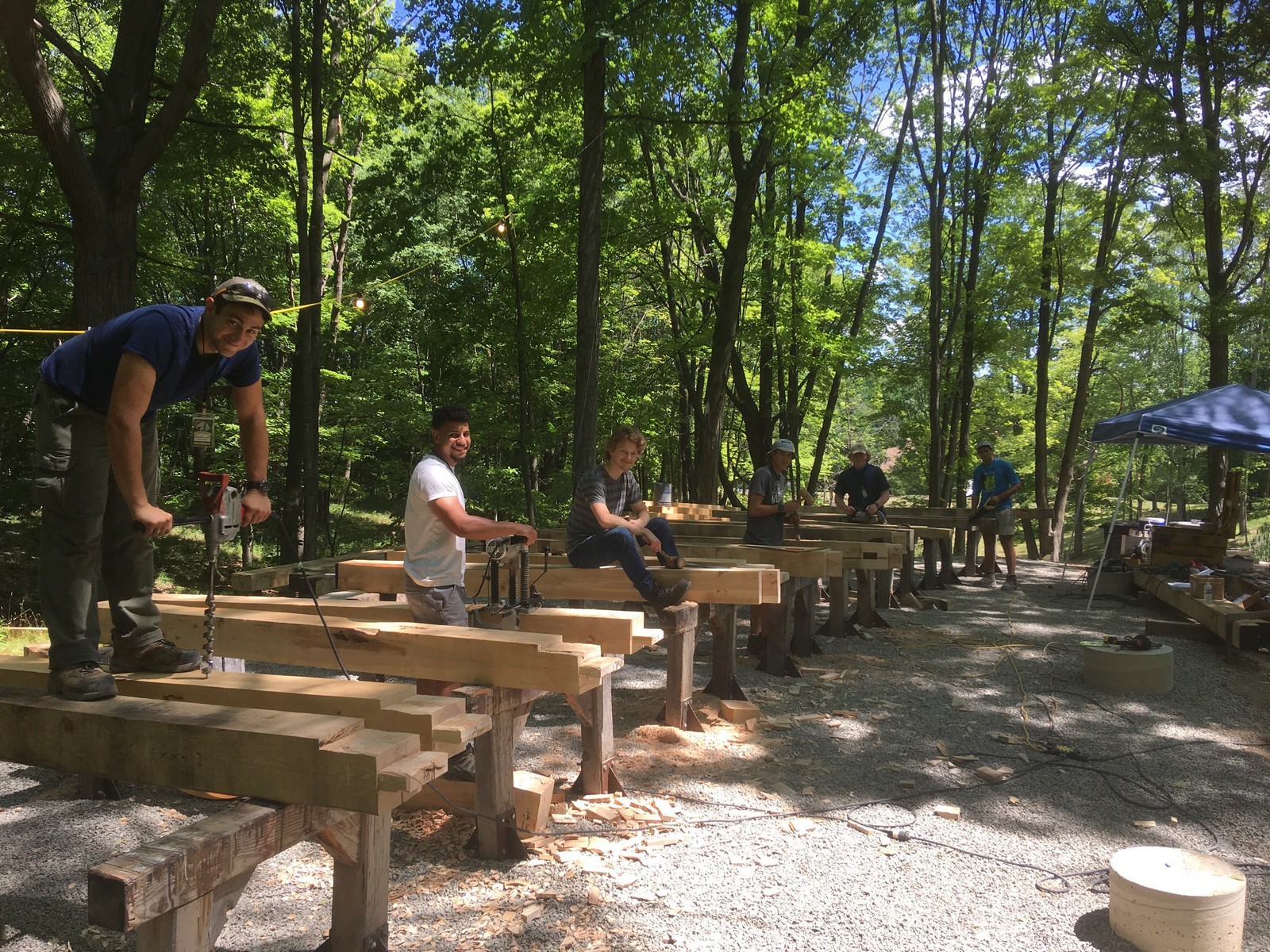It’s probably safe to say that the vast majority of ceilings installed over timber frame roof systems are v-grooved tongue & groove boards, 6” or 8” wide. At least that’s the impression you’d get after leafing through timber frame magazines and books, or after visiting the web sites of timber frame companies. Natural, unfinished white pine seems to be the prevalent choice, and usually provides a complementary, slightly contrasting neutral backdrop for the timbers.
There are, however, many other options worth considering. Tongue and groove boards without the v-grooved edges impart a completely different feel – the linear pattern of the boards is de-emphasized or disappears. Different widths of tongue & groove boards can also be used to good effect. Tongue & groove boards come in widths from 4″ to 10″, usually in two inch increments, and can be laid up in a pattern that looks pretty random. Beaded boards are also worth considering. Besides white pine, we’ve used poplar, cedar, Douglas fir, and oak boards. We usually suggest not using ceiling boards of the same species as that of the timbers since that usually causes the timber frame to blend in with the boards. Of course, it’s a matter of personal tastes.
Also a matter of personal taste is the finish of the boards. We’re partial to using ceiling boards in their raw, unfinished state – left alone and given time, they’ll mellow nicely. Of the several good-looking finishes worth considering , though, boards that have been treated with a “pickling” stain (a semi-transparent white stain) help to elevate the ceiling and make a space brighter, just as a conventional ceiling is often painted a bright white. Some of our clients have painted the ceiling boards a bright white and the resulting was surprisingly pleasing. Oiling the ceiling boards – the way timbers are usually treated – hardly seems worth the effort. One of our clients, however, ended up applying a hard clear satin finish to his ceiling boards and the result was stunning. One strong suggestion: don’t even think about staining your wooden ceiling a dark color.
Some would rather not see the whole ceiling covered in wood, and for these clients a plaster product can be the answer. Regular drywall works fine, and, with some forethought in timber frame design, the drywall panels can even be installed in such a way that all the joints are hidden behind timbers. Either a smooth or textured paint will look great next to the timbers. Blue board with veneer plaster is another option. Plaster over blue board yields a hard and consistent surface that provides a much better painting substrate than drywall. Of course, the plaster doesn’t have to be painted: it can be left its natural off-white color; or, the plaster itself can be tinted in a number of ways.
So how do you decide which type of ceiling works best for you? Most of the factors affecting this decision are a matter of taste, but there are also a few objective ones. One of these is cost. We’ve found that a ceiling of unfinished white pine tongue & groove boards (either v-grooved or square-edged), all the same width, will cost less in the long term than just about any other option. Most people assume that a plaster board ceiling is going to be the least costly of the various options. If raw material cost were the only consideration, then they’d be right. But once wood boards are applied over the timbers, they need not be touched again, ever. The plaster board, on the other hand, will need to have dents, scratches, and dimples spackled, sanded, primed, and painted – all of this most likely at significant heights and on sloping surfaces. And while the unfinished tongue & groove can be put up and left alone for many years to come, a painted surface, over time, will need to be painted again at some point, and perhaps yet again.
Lastly, ceilings have a lot to do with how it feels to be in the space below. A small space, or a space with a lower ceiling, can be made to feel more expansive – or less oppressive – if a smooth white ceiling is used. A cavernous or very high space, on the other hand, can be made to feel more intimate with the warmth of a wood ceiling.
-Tony Zaya


